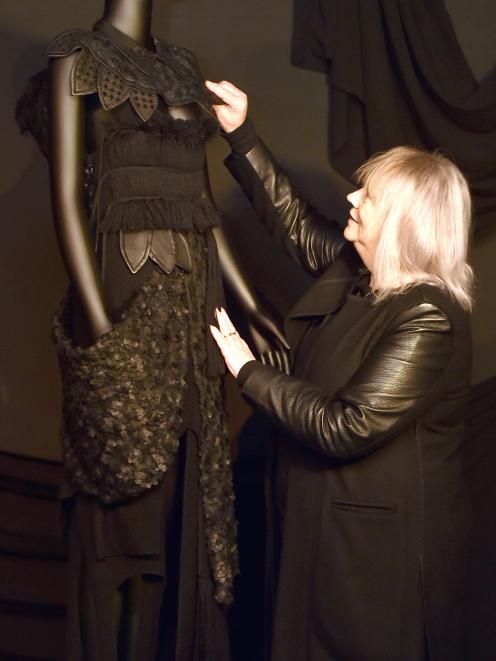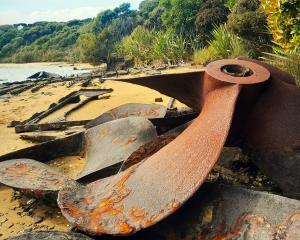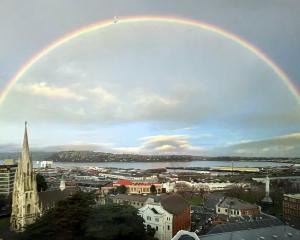
That being the case, we can look as long as we like without risk of discomfort. Examine without hurrying the careful construction. Consider the role each part is playing. Or whether they need a role assigned at all, a function, beyond their aesthetic purpose.
In doing so, a story emerges, of where such a piece might be worn, and when. And how the world might react, on George St or Oxford St.
Certainly for the designer, Donna Tulloch, this piece - called slyly Shear Determination - in Otago Museum’s exhibition Fashion FWD >> Disruption Through Design is all about narrative.
"It was about my father really, who was a shearer," Tulloch says. "Of course, it’s the old classic woollen singlet."
It’s possible that the viewer has not picked up this reference to the shearing shed by looking alone. But now we know.
"So, it’s made up of singlets underneath."
There are half singlets and shoulder straps.
"And, of course, the wool, because he was a blade shearer. He did lots of other things too, he was a musterer and all that. But it was going back to his past and reinventing something that was part of our family."
It was then embellished further as an exhibition piece.
"I call it the bouquet of barbed wire," she says of the large fanned collar, a nod to the No.8 of lore.
"The back is like a backpack of yarn, so it has a big scoop back and it is full of yarns," Tulloch explains of another of the myriad layers.
Yarns figuratively, yarns literally.
"The idea was representing the wool fleece."
All her work has to have a story behind it, the Mild Red designer says, whether it is an exhibition piece such as this, or something from one of her designs for everyday.
"I love the process of the storyline."
"Fashion FWD" tells all sorts of stories, from those spun by New Zealand’s fashion label success stories — including a full line-up of Dunedin’s "Godmothers" of fashion — to the emerging tales being told by new voices.
Their pieces stand like soft statues, which suits them. Tulloch talks about her sculptural approach, the clothing’s architecture.
The exhibition also reaches back in time, deploying the rich textile treasures of Otago Museum’s own collection to illustrate the way in which fashion has long sought to challenge and disrupt.
Museum honorary curator and dress historian Jane Malthus has been central to this latter part of the exhibition, given her encyclopedic knowledge of both the collection and the way New Zealand has dressed.
She points out a piece from the collection a short stare from where Tulloch’s stands that could have been an earlier chapter in the same story.
It’s a three-quarter length coat, clearly skilfully crafted, but around which hangs a sense of unease in these more squeamish times.
It too tells a story of transformation, one of the exhibition’s themes - others include wellbeing and freedom. There are seven.
The coat is made of deerskin.
"Made from young animal skins, because they lose their spots after about three or four months," Dr Malthus explains. "But from culled deer, deer that were culled around Lake Sumner in Canterbury, in probably the 1930s or so.
"A beautifully put together garment. It’s not necessarily PC now to do that but it was in the past an OK thing to be doing. And it is using something that would otherwise be completely thrown away."
Designers have always worked with ideas like this, she says.
"Have always thought about reuse, recycling, upcycling, sustainability. Have always thought about the ideas behind the clothes, not just clothes necessarily. As well as the whole issue of how clothes are put together."
They are tales by tailors of making.
Tulloch advises that visitors to the exhibition will need to allow themselves some time.
"It is like walking through a visual timewarp," she says.
• The exhibition opened on Saturday.











